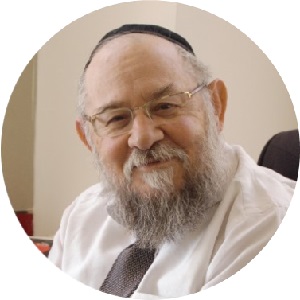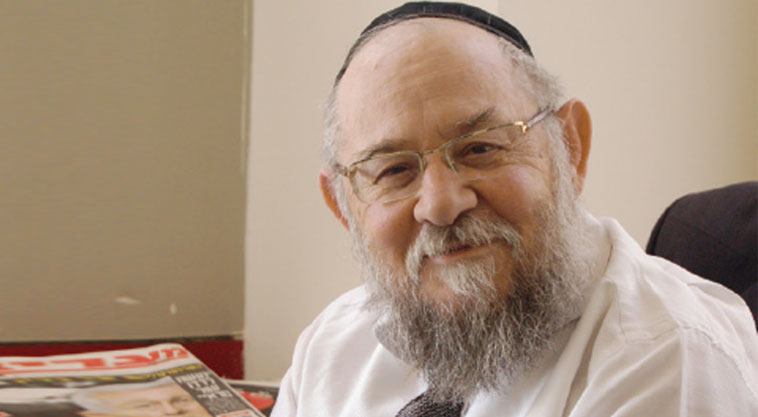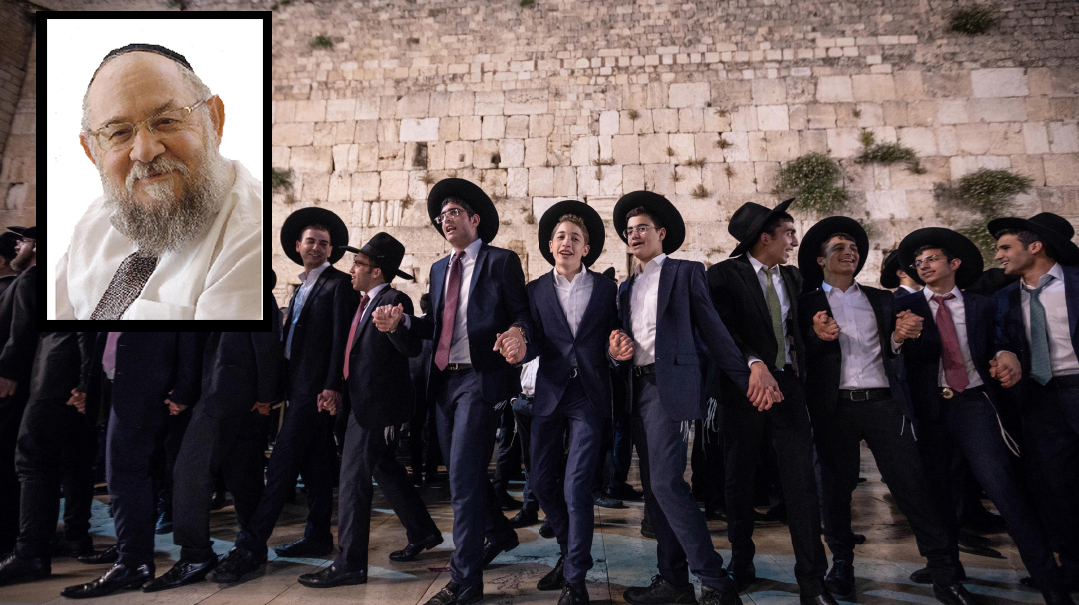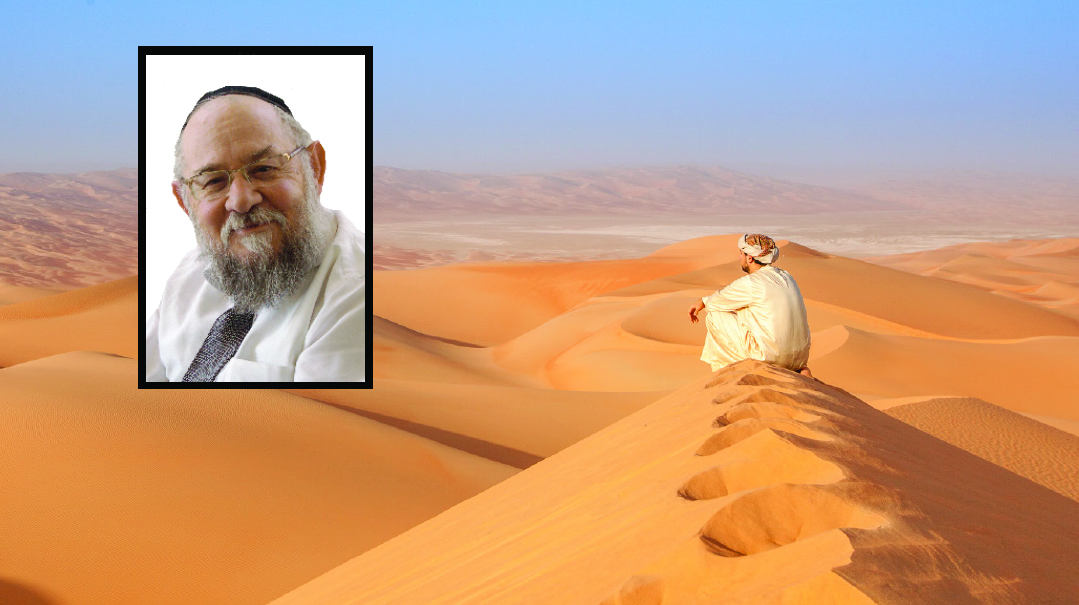Invisible but Undeniable

Prayer is not an escape, it's a mirror to our true selves
Even in the modern world of science and reason, we know all too well that you don’t have to see something to feel its impact. Those who have truly mastered prayer can attest to the invisible, unmeasurable tool’s power to cleanse, to uplift, and to offer hope
Right in the middle of the workday, a man abandons his phone, his computer, all the devices that hold him in bondage throughout his working hours. He leaves his desk and tells his secretary he won’t be available for the next 15 minutes, because it’s time for him to pray.
He stands in front of a blank wall and seems to address it, murmuring words to someone he can’t see. Yet, he has no doubt that he’s doing something of great significance — something that sustains the entire world, in fact.
Our murmuring man would surely identify with these remarks by Rav Avraham Yitzchak Kook: “Tefillah is an absolute necessity for us and for the entire world. It is also the most efficacious form of pleasure, raising our neshamah like the flowing waves. We desire from ourselves and from the world a level of perfection that our limited reality cannot give us… Tefillah literally revitalizes the spirit” (Oros HaTefillah).
Prayer, then, is not just our lips murmuring words by rote; it is an offering to G-d, a “service of the heart.” The world’s fate depends on it. And it is also the greatest, the most efficacious of pleasures, actually giving life to the human soul.
So what actually happens in the heart of a person as he stands in prayer? How does this dynamic take place, raising the neshamah like the flowing waves?
Twenty-first century man looks upon prayer with a dismissive, if not disdainful, eye. His approach to life is pragmatic; show him results and he’ll concede that something is effective. If something doesn’t “work,” he casts it aside. “Seeing is believing,” he says. “And you over there, bobbing up and down — stop talking to yourself!”
A true realist, however, knows there are many perfectly real things that we can’t see. We can’t see atoms, sound waves, or electric currents. We can’t weigh and measure love or loyalty; we can’t fill a bottle with anger. Earnestness and idealism are very real phenomena although we can’t see or touch them. Only a fool would say that a table or a lamp, because it is tangible, means more in life than love or fear.
And now, locked inside, fearing a viciously powerful pandemic that we cannot see or sense but whose impact is all too real, we know as never before that some of the world’s most powerful elements cannot be discerned with our limited sense.
Prayer, too, is an intangible reality.
Even in this cynical age, we all know the cry of fear that bursts out spontaneously in moments of danger and the cry of joy in moments of happiness or triumph. To whom are we crying out? To some nameless presence out there, to an unseen G-d. No matter what words came bursting out, we’re prompted by a feeling deep within that Someone hears us.
To experience an intense moment like this is to taste the taste of prayer. If a person recalls such a moment and analyzes it, he will note how that swelling ocean of emotion, however earthbound and tangible the experience, is catapulted all at once to a higher realm, a realm where the laws of natural cause and effect do not hold sway.
For example, imagine a man who has just heard that a plane carrying his wife and children has disappeared mid-flight. Terrified and helpless, he immediately casts his fate into the hands of a Higher Power. Whether he’s a man of faith or not, something very prayer-like will flow out of his heart: “Please, let there be a miracle; let them come home safe.” Without any calculation or logical pivot, he instinctively takes refuge in a perspective that frees him from the harsh limitations of natural law; he relies on an invisible something that is above those limitations. His neshamah is indeed raised like the flowing waves.
If, to his great good fortune, word comes from the control tower that the plane has been located and has made a safe emergency landing in Kosovo, his heart is flooded with gratitude. “Thank you!” he says to that unseen entity he may be unwilling to recognize when he feels he has things under control — whether he calls it G-d, “the Universe,” or has no name for it at all.
Whether the feelings are painful or joyous, the effect is the same, opening the gateway from the narrow and mundane to the infinite, from the shackles of the material world to the unplumbed depths of power, wisdom, happiness, and harmony — the Source of all good which the man who truly prays is not ashamed to call by its Name — G‑d.
Prayer, in other words, is not an escape from the world into childish imagination, as the atheist would have it, but a revelation of the world in its full depth and beauty, and of its demands, as well.
A religious person experiences daily what the man whose prayer is triggered by circumstance — by accident, as it were — experiences only in moments of extremity. One who prays regularly develops this feeling and lives with it even on the most humdrum days. His spontaneity is not shackled, but guided and nurtured. He disciplines it with regular, daily training. One who prays is like a musician, who becomes a virtuoso only through years of endless, sometimes grueling, practice. Only after he’s mastered his instrument do the melodies rising from it sound natural, spontaneous, and full of sublime feeling.
Tefillah is a dynamic activity that takes place in the depths of the human soul and purifies it. It is a person’s mirror, showing him his true reflection. By means of prayer he can assess where he is holding spiritually. A short spell of detachment from his work, from the stimuli and pressures of his environment, and from the things he has accomplished or not accomplished, affords him a moment of introspection.
The root of the word tefillah means “to judge.” A person who prays is judging himself, discovering the weak links that need repair, and contemplating himself from the spiritual height that he actually aspires to reach.
As Rav Kook wrote, “We desire from ourselves and from the world a level of perfection that our limited reality cannot give us.” We may not reach the perfection we so deeply desire, but nevertheless, after tefillah we go back to our office, our phone, and our meetings a little bit purified. We feel an uplifting stream of spiritual energy washing over us like cleansing water, lending us renewed strength for our everyday tasks. That uplift tells us that our prayer has been heard Above, and fills us with hope for siyata d’Shmaya beyond our human ability.
A cynic won’t believe a man of faith describing how his soul thrives on daily tefillah, an exercise that requires much more than mumbling lips. He’ll shake his head and mutter, “Another one of those delusional folks.” But one who knows how to pray can shake his head right back, just as anyone would shake his head in pity for a person who says there’s no such thing as love.
Food for Thought
All kinds of worry are forbidden, except for worrying about worrying
(Rav Yisrael Salanter)
(Originally featured in Mishpacha, Issue 808)
Oops! We could not locate your form.




